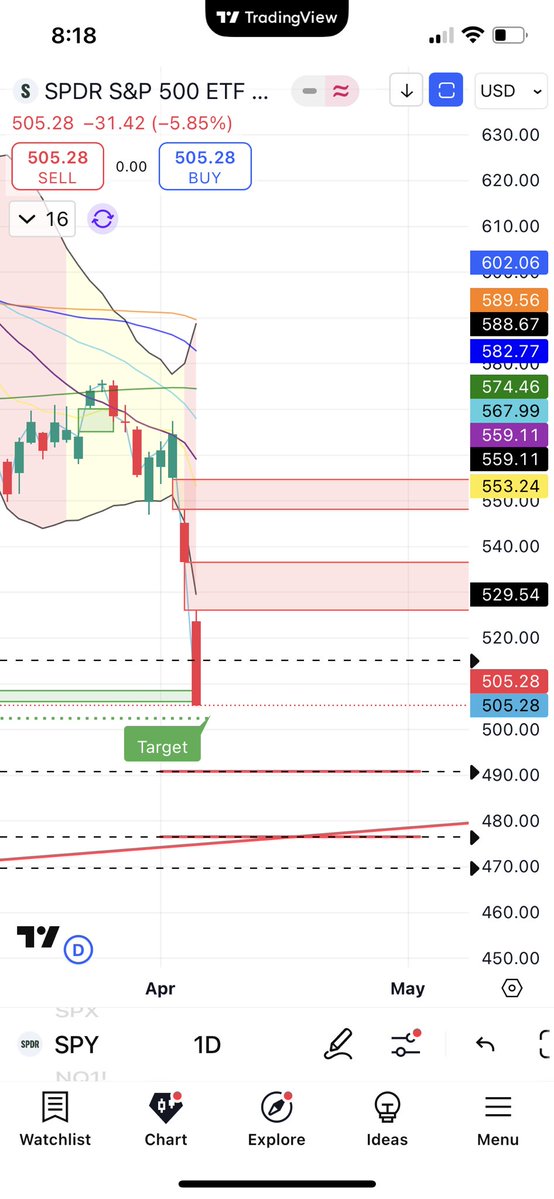The Emotional Rollercoaster of Stock Market Investing
The Illusion of Control
The Art of Technical Analysis
Investing in the stock market often feels like a high-stakes game of poker. You spend countless hours poring over charts, reading financial reports, and scrutinizing market trends. You draw your lines, set your alerts, and feel ready to make your move. But then, the market throws a curveball. It doesn’t care about your meticulous analysis or the lines you’ve so carefully plotted. Welcome to the unpredictable world of stock market investing.
Technical analysis is a popular tool among investors. It involves studying past market data, such as price and volume, to predict future price movements. Tools like moving averages, trend lines, and support and resistance levels are commonly used. For instance, an investor might identify a long-term trend line support level at 475, a price they might consider buying at if the stock reaches that level. However, while technical analysis can provide valuable insights, it’s far from foolproof. Markets are influenced by a multitude of factors, many of which are unpredictable. This is where the emotional rollercoaster begins.
The Market’s Indifference
The stock market is a complex system influenced by a myriad of factors, from economic indicators and geopolitical events to investor sentiment and even the weather. This indifference can be frustrating, but it’s also a crucial aspect of the market’s nature. The market doesn’t care about your analysis, your feelings, or your carefully drawn lines. It’s a relentless force that moves according to its own rules, and understanding this indifference is the first step in navigating its emotional highs and lows.
The Emotional Impact
The Thrill of the Chase
Investing can be exhilarating. The thrill of spotting a potential opportunity, the excitement of making a trade, the satisfaction of seeing a profit—these are all part of the appeal. The market’s volatility can make it feel like a rollercoaster, with moments of exhilarating highs. But the market’s unpredictability means that these highs are often followed by lows. The thrill of the chase can quickly turn into the agony of defeat when the market moves against you.
The Agony of Defeat
When the market moves against you, it can be devastating. You might feel a sense of loss, not just financially, but also emotionally. You might question your analysis, your strategy, even your sanity. This is where many investors make their biggest mistakes. The emotional toll of investing can be significant, and it’s important to have strategies in place to cope with these inevitable ups and downs.
Coping with the Rollercoaster
Acceptance
The first step in coping with the emotional rollercoaster of investing is acceptance. You must accept that the market is unpredictable and that losses are a part of the game. This doesn’t mean you should be reckless, but rather that you should be prepared for the inevitable ups and downs. Acceptance allows you to approach investing with a clearer mind, reducing the emotional impact of market fluctuations.
Discipline
Discipline is key in investing. This means sticking to your strategy, even when the market is against you. It means not letting your emotions dictate your actions. It means being patient and waiting for the right opportunities. Discipline helps you stay focused on your long-term goals, rather than being swayed by short-term market movements. By maintaining discipline, you can navigate the emotional rollercoaster more effectively.
Diversification
Diversification is another important strategy. By spreading your investments across different sectors, industries, and asset classes, you can reduce your risk. This doesn’t mean you’ll avoid losses altogether, but it can help smooth out the rollercoaster ride. Diversification ensures that a downturn in one area of the market doesn’t wipe out your entire portfolio. It’s a way to hedge against the market’s indifference and protect your investments.
Conclusion: The Market’s Indifference is Your Opportunity
The stock market’s indifference is a double-edged sword. On one hand, it can be frustrating and even painful. But on the other hand, it presents opportunities. By understanding and accepting this indifference, by maintaining discipline and diversification, you can turn the emotional rollercoaster of investing into a rewarding journey.
The market doesn’t care about your feelings or the lines you scribble. But that’s okay. Because in the end, it’s your actions, not your feelings, that determine your success. So, keep analyzing, keep learning, and most importantly, keep investing. The market might not care, but you should. Because your future self will thank you.

